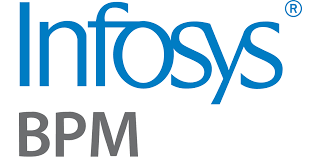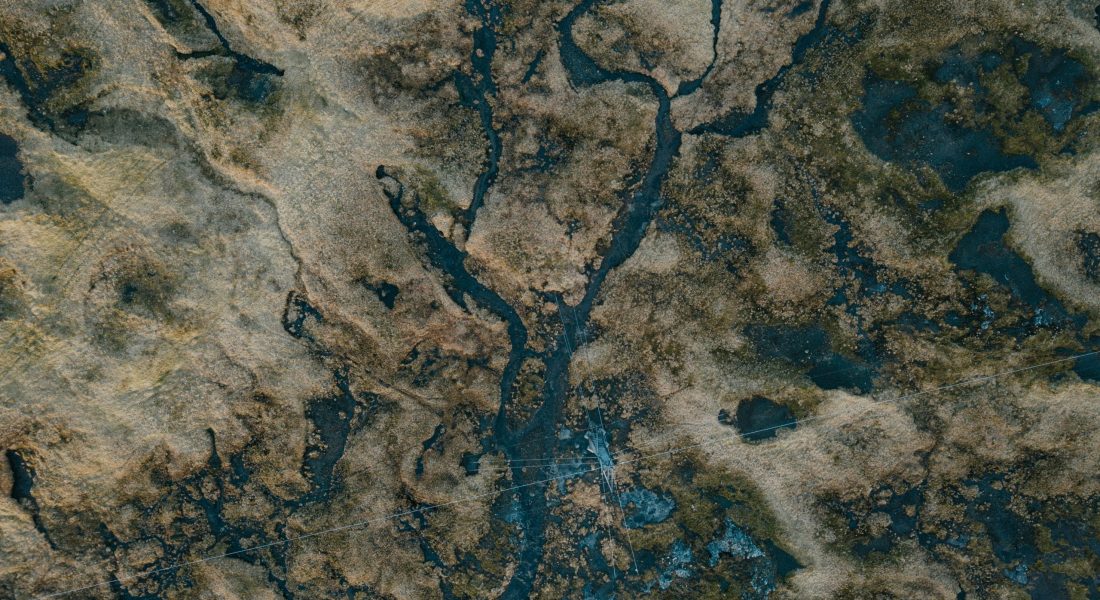Integrating geospatial data is a critical step for industries like agriculture, urban planning, and environmental management. Whether it’s satellite imagery, drone footage, or GIS records, these data sources often come from different formats and systems. Geospatial data integration companies help make sense of it all, combining this information into cohesive platforms that support better analysis and decision-making.
In this guide, we take a closer look at companies offering tools and services that simplify how location data is processed and used. From large organizations managing vast datasets to smaller teams with focused needs, these providers offer flexible solutions that help turn scattered geospatial inputs into clear, actionable insights.

1. FlyPix AI
At FlyPix AI, we focus on helping teams make better use of complex geospatial data through a no-code platform powered by artificial intelligence. Our tools are designed for industries like agriculture, construction, urban planning, and environmental monitoring, where extracting insights from satellite imagery, drone footage, or radar scans can make a real difference. Users can detect objects, monitor changes over time, and identify anomalies — all without writing a single line of code.
As one of the geospatial data integration companies working to simplify this space, we support a wide range of imagery types, including hyperspectral, lidar, and SAR. Our platform gives users the flexibility to train their own AI models, scale up as their data grows, and visualize results in real time. From individuals to large organizations, we offer plans that adapt to different needs, making geospatial analysis both approachable and practical.
Key Features:
- No-code platform for object detection, segmentation, localization, and anomaly detection
- Supports multiple image types: satellite, drone, hyperspectral, LiDAR, and SAR
- Interactive tools for training AI models without coding
- Real-time analytics with dashboards, heatmap generation, and change tracking
- API access, multispectral processing, and expert-assisted QA
Services:
- Geospatial object detection and localization
- Change and anomaly detection in imagery
- Dynamic tracking of objects over time
- Custom AI model development for tailored analytics
- Integration with existing GIS systems
- Heatmap generation for data visualization
Contact and Social Media Information:
- Website: flypix.ai
- Address: Robert-Bosch-Str. 7, 64293 Darmstadt, Germany
- Phone: +49 6151 2776497
- Email: info@flypix.ai
- LinkedIn: www.linkedin.com/company/flypix-ai

2. Carto
Carto is all about making maps do more than just look nice. Their platform leans into visual storytelling and analysis, giving users the ability to combine spatial data with real-world context. It’s not just about plotting dots on a map – it’s about seeing how different layers of information interact. That makes it especially useful for people working in city planning, supply chain management, or environmental research.
The platform runs in the cloud or on-premise, depending on your needs. What stands out is how smoothly it connects with business tools like dashboards and analytics software. Teams can visualize, analyze, and act on location data without leaving the systems they already use. And for those who don’t have GIS experience, the learning curve isn’t as steep as it is with traditional mapping tools.
Key Features:
- Customizable mapping and location data visualizations
- Integration of various spatial data formats
- Cloud-based and on-premise deployment options
- Support for real-time data processing and analysis
- Easy integration with business intelligence tools
Services:
- Geospatial data visualization and mapping
- Location-based analytics for businesses
- Custom mapping and geospatial data solutions
- Consulting and support for geospatial projects
- Data integration with external business systems
Contact and Social Media Information:
- Website: carto.com
- Linkedin: www.linkedin.com/company/carto
- Twitter: x.com/CARTO
- Facebook: www.facebook.com/CartoDB

3. Esri
Esri is one of the most recognizable names in this space, and for good reason. Their ArcGIS platform is a kind of Swiss Army knife for geospatial data – it handles mapping, modeling, analysis, and more. Public sector agencies, conservation groups, utility companies – a lot of them rely on Esri to manage both day-to-day spatial data and big-picture planning.
ArcGIS is deep, with tools for both beginners and advanced users. There are apps for mobile data collection, browser-based dashboards, and desktop software for complex analysis. What Esri really brings to the table is continuity – you can use one system across teams, departments, or even entire organizations. And because the company has been around for a long time, there’s a strong support and training network behind it.
Key Features:
- Comprehensive GIS tools for mapping and spatial analysis
- Integration with other enterprise systems and data sources
- Real-time data processing and visualization
- Web-based and desktop applications
- Advanced data analysis and geospatial modeling capabilities
Services:
- GIS software for data analysis and mapping
- Geospatial data management and integration
- Custom geospatial solutions and consulting
- Training and technical support for GIS users
- Cloud-based geospatial data services
Contact and Social Media Information:
- Website: www.esri.com
- Address: 380 New York Street, Redlands, California, United States of America
- Phone: +1 909 793 2853
- E-mail: accounts@esri.com
- LinkedIn: www.linkedin.com/company/esri
- Twitter: x.com/Esri
- Facebook: www.facebook.com/esrigis
- Instagram: www.instagram.com/esrigram

4. SafeGraph
SafeGraph takes a different route from most geospatial companies – instead of giving you tools to manage data, they give you the data itself. Their focus is on physical places: where businesses are, how people move around them, what’s changing over time. It’s detailed, clean, and ready to drop into whatever system you already use. That’s a big deal for teams who don’t want to spend days cleaning raw datasets.
They’re especially popular in sectors like retail, real estate, and advertising, where knowing foot traffic patterns or store locations can shape decisions. One thing that makes SafeGraph stand out is how fresh the data is. They update it regularly and deliver it in formats that are easy to use, so companies can react faster to shifts in the real world.
Key Features:
- High-quality geospatial data on physical places and locations
- Granular data on consumer behavior and foot traffic
- Integration with third-party analytics and business intelligence tools
- Frequent data updates to ensure accuracy
- Customizable data solutions for different industries
Services:
- Geospatial data collection and mapping
- Location intelligence for consumer insights
- Foot traffic analysis and reporting
- Custom data solutions for retail and real estate
- API access to integrate SafeGraph data into existing platforms
Contact and Social Media Information:
- Website: www.safegraph.com
- Email: press@safegraph.com
- LinkedIn: www.linkedin.com/company/safegraph
- Twitter: x.com/safegraph
- Facebook: www.facebook.com/SafeGraph

5. Korem
Korem isn’t selling a one-size-fits-all platform. Instead, they get hands-on with clients to figure out what kind of geospatial setup actually works for their situation. That might mean building out a full integration workflow or just helping a team choose better data sources. The focus is on tailoring the solution – not just handing over software and walking away.
What makes Korem valuable is the mix of technical skill and business awareness. They understand that location data only matters if it helps someone make a decision. So they spend time aligning tools with strategy. That’s why you’ll find them working closely with companies in logistics, utilities, and retail – sectors where location drives a lot of daily decisions.
Key Features:
- Integration of multiple data sources for location-based insights
- Customizable geospatial analysis tools
- Real-time data processing and reporting
- Scalable solutions for different industries
- Data visualization and dashboard creation
Services:
- Geospatial data integration and analysis
- Location intelligence solutions for business optimization
- Custom geospatial system development
- Data visualization and decision support
- Consulting services for geospatial projects
Contact and Social Media Information:
- Website: www.korem.com
- Address: 6312 S. Fiddler’s Green Circle, Suite 300E, Greenwood Village, Colorado 80111
- Phone: +1 888 440-1627
- LinkedIn: www.linkedin.com/company/korem
- Facebook: www.facebook.com/korem.geospatial

6. Infosys BPM
Infosys BPM takes geospatial data and weaves it into bigger business processes. Rather than treating location data as a separate system, they look for ways to fold it into customer service, asset management, or public operations. It’s a good fit for large organizations, especially in industries like transportation and utilities, that already have complex systems in place.
They’re not just plugging in maps for the sake of it. Infosys helps automate workflows using location intelligence, connect systems that weren’t speaking to each other before, and give teams more context around what they’re seeing. It’s less about offering a new tool and more about reshaping how existing ones are used together.
Key Features:
- Integration of geospatial data with business processes
- Real-time data analytics and reporting
- Scalable geospatial solutions for various industries
- Location-based insights to optimize operations
- Consulting and implementation services for geospatial projects
Services:
- Geospatial data integration and management
- Location intelligence and analytics
- Business process optimization with geospatial insights
- Data-driven decision-making support
- Consulting and project implementation
Contact and Social Media Information:
- Website: www.infosysbpm.com
- LinkedIn: www.linkedin.com/company/infosys-bpm
- Twitter: x.com/infosysbpm
- Facebook: www.facebook.com/InfosysBPM

7. Mapbox
Mapbox gives developers the ability to build real-time, responsive maps into their apps. If you’ve ever used a ride-hailing service or a delivery tracker, there’s a good chance Mapbox was behind it. Their tools are designed to be flexible – developers can control how a map looks, how it updates, and how it behaves with live data.
They’re well known for speed and customization. You can stream in data as it changes, apply your own logic for how to display it, and scale it across millions of users. That makes Mapbox popular among fast-moving tech companies that want mapping to feel like part of the product – not just a background feature.
Key Features:
- Customizable mapping and geospatial visualization tools
- Real-time data processing and analytics
- API access for easy integration into applications
- Advanced geospatial analytics capabilities
- Scalable solutions for large datasets
Services:
- Custom map creation and data visualization
- Geospatial data analysis and reporting
- Location-based insights for application development
- Route optimization and navigation solutions
- Real-time data integration for businesses
Contact and Social Media Information:
- Website: www.mapbox.com
- LinkedIn: www.linkedin.com/company/mapbox
- Twitter: x.com/mapbox
- Instagram: www.instagram.com/mapbox

8. Trimble
Trimble’s strength is how it connects the physical and digital worlds. They build both the devices used to capture spatial data – like GNSS receivers or scanning tools – and the software needed to process and visualize it. That full-stack setup is a big draw for construction firms, surveyors, and agricultural teams that depend on precision in the field.
The process usually starts on-site, with data collected through specialized hardware. From there, it’s synced with cloud platforms or GIS systems for deeper analysis. This integration cuts down on delays, errors, and duplicated effort. It also helps teams move faster from measurement to action, especially when projects are spread across locations.
Key Features:
- Advanced data collection and analysis tools
- Real-time geospatial data processing
- Seamless integration with other business systems
- Scalable solutions for large and small businesses
- Precision technology for surveying and mapping
Services:
- Geospatial data collection and analysis
- Surveying and mapping solutions
- GIS integration and consulting
- Custom solutions for industry-specific needs
- Real-time location-based analytics
Contact and Social Media Information:
- Website: www.trimble.com
- Address: 10368 Westmoor Drive, Westminster, CO 80021 USA
- Phone: +1 (720) 887-6100
- LinkedIn: www.linkedin.com/company/trimble
- Twitter: x.com/TrimbleCorpNews
- Facebook: www.facebook.com/TrimbleCorporate
- Instagram: www.instagram.com/trimble_official

9. 1Spatial
1Spatial zeroes in on one of the biggest problems in geospatial work: messy data. Their platform is all about quality control. It helps organizations validate, clean, and enforce rules around how spatial data should behave. That matters when you’re working with big, high-stakes datasets – think telecom networks, government infrastructure, or utility maps.
Instead of relying on teams to manually clean things up, 1Spatial lets users set rules that automatically flag issues or fix them. This kind of automation saves time, but it also helps avoid costly errors. You can keep your data in check even as it flows between different tools or teams.
Key Features:
- Geospatial data integration and management solutions
- Tools for spatial data quality assurance and optimization
- Integration with existing enterprise systems
- Automation of geospatial workflows and data processing
- Scalable solutions for large datasets
Services:
- Geospatial data integration and management
- Spatial data quality and accuracy optimization
- Workflow automation for geospatial processes
- Consulting services for spatial data management
- Customizable solutions for various industries
Contact and Social Media Information:
- Website: 1spatial.com
- Address: 8614 Westwood Center Drive #350, Vienna, VA 22182, United States
- Phone: +1 888 219 3375
- E-mail: info@1spatial.com
- LinkedIn: www.linkedin.com/company/1spatial-us
- Twitter: x.com/1spatial

10. Google Cloud
Google Cloud gives businesses the tools to process huge amounts of location data without building infrastructure from scratch. Whether you’re working with map layers, traffic patterns, or satellite images, the platform makes it easier to store, analyze, and visualize it at scale. It also plugs into Google’s broader ecosystem – Maps, BigQuery, machine learning – so you can build some pretty complex systems without starting from zero.
The appeal here is speed and flexibility. You can process real-time inputs, run AI models, and serve up insights to end users without much lag. It’s a solid choice for companies that need to turn spatial data into action fast, especially across teams or departments.
Key Features:
- Cloud-based geospatial data processing and analysis
- Integration with Google’s other services, including machine learning
- Scalable solutions for managing large datasets
- Real-time data processing and analysis
- High-performance data storage and visualization
Services:
- Geospatial data visualization and analysis
- Cloud-based data storage and processing
- Machine learning integration with geospatial data
- Real-time data processing and insights generation
- Industry-specific solutions for geospatial challenges
Contact and Social Media Information:
- Website: cloud.google.com
- Address: 111 8th Ave, New York, NY 10011
- E-mail: press@google.com
- LinkedIn: www.linkedin.com/company/google
- Twitter: x.com/google
- Facebook: www.facebook.com/Google
- Instagram: www.instagram.com/google

11. Hexagon
Hexagon combines geospatial software, hardware, and analytics in one ecosystem. They’ve been building tools for fields like agriculture, mining, and emergency response – industries where understanding physical space isn’t optional. Their platforms work across devices and data sources, letting teams monitor conditions in real time or run simulations to test different scenarios.
One thing that stands out with Hexagon is their focus on spatial awareness. It’s not just about seeing where something is, but understanding how it’s changing or how it interacts with its surroundings. That kind of layered insight can make a big difference when you’re dealing with unpredictable or high-risk environments.
Key Features:
- Integration of geospatial data from various sources
- Advanced geospatial analysis and visualization tools
- Scalable solutions for businesses of all sizes
- Real-time data processing and reporting
- Data management for various industries
Services:
- Geospatial data integration and management
- Mapping and surveying solutions
- Real-time geospatial data analysis
- Industry-specific geospatial solutions
- Consulting services for geospatial data projects
Contact and Social Media Information:
- Website: hexagon.com
- LinkedIn: www.linkedin.com/company/hexagon-ab
- Twitter: x.com/HexagonAB
- Facebook: www.facebook.com/HexagonAB
- Instagram: www.instagram.com/hexagon_ab

12. Microsoft Azure
Azure offers cloud infrastructure that can handle geospatial workflows alongside everything else a business is running. It supports storage, real-time processing, machine learning, and API integration, which makes it easier to fold location data into enterprise systems. If a company is already using Microsoft tools, adding geospatial capabilities often feels like a natural extension.
What Azure does well is let companies scale up or down depending on their needs. You can start small – with something like traffic monitoring or site selection – and build out more advanced tools as you go. The platform’s flexibility means you’re not locked into one use case or one type of data source.
Key Features:
- Cloud-based geospatial data storage, processing, and analysis
- Real-time geospatial data processing capabilities
- Integration with Microsoft’s suite of tools and APIs
- Scalable solutions for handling large datasets
- Secure cloud infrastructure for sensitive geospatial data
Services:
- Cloud-based geospatial data storage and processing
- Real-time data analytics and visualization
- Seamless integration with machine learning workflows
- API access for customized geospatial data solutions
- Industry-specific geospatial solutions for various use cases
Contact and Social Media Information:
- Website: azure.microsoft.com
- LinkedIn: www.linkedin.com/company/Microsoft
- Twitter: x.com/Microsoft
- Facebook: www.facebook.com/Microsoft
Conclusion
Geospatial data doesn’t work in isolation. To really get value from it, you need systems that can pull it all together – satellite imagery, field data, traffic patterns, property records – and turn it into something usable. The companies in this list each offer a different way to do that. Some bring platforms that simplify analysis. Others deliver clean, ready-made datasets. A few dive in and help you build your whole geospatial workflow from scratch.
There’s no single tool that works for everyone. Some teams need speed and real-time tracking. Others need tight data validation or deep customization. The key is knowing what kind of decisions you’re trying to make – and then finding a partner that helps you get there without drowning in complexity. When it clicks, geospatial integration stops being a headache and starts being a competitive edge.
